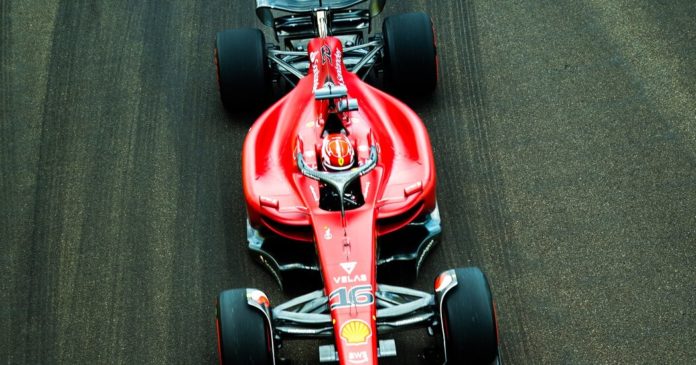
What it does have is the team principal Günther Steiner, whom “Drive to Survive” has transformed into one of Formula 1’s most popular personalities. An Italian from the German-speaking region of South Tyrol, Steiner has worked in racing for three decades, including briefly as Red Bull’s technical director. During all that time, almost nobody outside the sport was aware of his existence. “I’d been following Formula 1 for years and had been to races as a spectator,” Rogers says. “And I had no idea who he was.” When I first met Steiner in 2017 during the Canadian Grand Prix in Montreal, we walked together unbothered through the paddock, the pedestrian thoroughfare used to access garages and temporary office space that teams are provided for the week. In Miami, he was recognized every few moments. Box to Box had discovered Steiner’s propensity for German-accented candor and salty language and utilized him as a recurring character. That made him a cult figure after the first season, and eventually a star. He insists that he hasn’t ever watched the show. “For the simple reason that you look at yourself, and maybe you behave differently,” he says. “And I don’t want to behave differently.”
He’s probably better off not seeing the second episode of Season 2, titled “Boiling Point.” In it, William Storey, an energy-drink entrepreneur with a flowing beard down to his chest, is shown on a helicopter ride. He explains that he has invested 35 million British pounds in Haas. “They’re a little bit rock ’n’ roll,” he says, “and they are Davids taking on the Goliaths of motor sport.” The rest of the episode chronicles the series of disasters that the team suffers during the season’s early stages. There’s a spin into a wall in Canada, a collision involving both of its cars in England, engines that mysteriously fail. “This is the worst experience I’ve ever had in any racecar ever,” Kevin Magnussen, one of Haas’s two drivers at the time, says at one point over the two-way radio. The cameras capture Steiner describing both his drivers as “[expletive] idiots” and Steiner’s adolescent daughter asking him during a family walk if he likes his job. Soon enough, Storey pulls his investment, leaving the team in financial turmoil. By the end, Steiner seems close to tears. If Haas ends up failing, he says, “I would have no idea what to do next.” It was poignant stuff. Nobody watching just the races would have known any of it was happening.
As Steiner was becoming wildly popular while his Haas team remained all but irrelevant, Christian Horner, the Red Bull team principal, took note. From the start, Horner has been one of the show’s most compelling characters, a charming but Machiavellian aristocrat shown feuding with Wolff, his counterpart at Mercedes, as their two teams battled for the championship last season, but also expertly riding a galloping horse on his country estate with his wife, Geri Halliwell, the Spice Girl. According to Bratches, Horner called Netflix early in the show’s run to say that if they sent a crew to Red Bull’s headquarters in southern England, he would make it worthwhile. “These guys are ridiculously competitive, and not just with the cars,” Bratches says. “We took advantage of that.”
Just as Steiner’s character might not have emerged if Ferrari and Mercedes had participated in Season 1, and Horner might not have opened the Red Bull doors quite so widely had Steiner not captured the spotlight, “Drive to Survive” wouldn’t have the extensive access that it does now if not for the pandemic. Season 2 was released on Feb. 28, 2020, right as the world was shutting down. Fans had all day and night to watch sports, but no live events. The viewership metrics of “Drive to Survive” took off, Riegg reports. “All of a sudden, it was like that hockey stick,” he says.
That July, Formula 1 resumed competition by constructing a virus-free bubble that included only team members indispensable to the races. Somehow, Netflix successfully made the case that “Drive to Survive” deserved access. Its crews were issued regulation team uniforms to make clear to local officials that they were part of the bubble. In effect, they embedded with the drivers and engineers. “The material we got as a result was incredible,” Rogers says. “The access you get when you’ve become part of the team gets you those moments with the real intimate feel.” More than two years on, the presence of Box to Box camera crews dressed as team employees has become part of the landscape of the sport.








